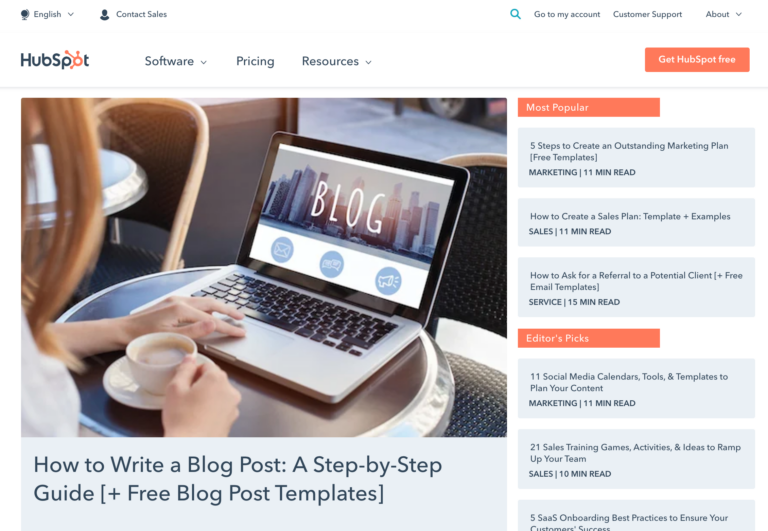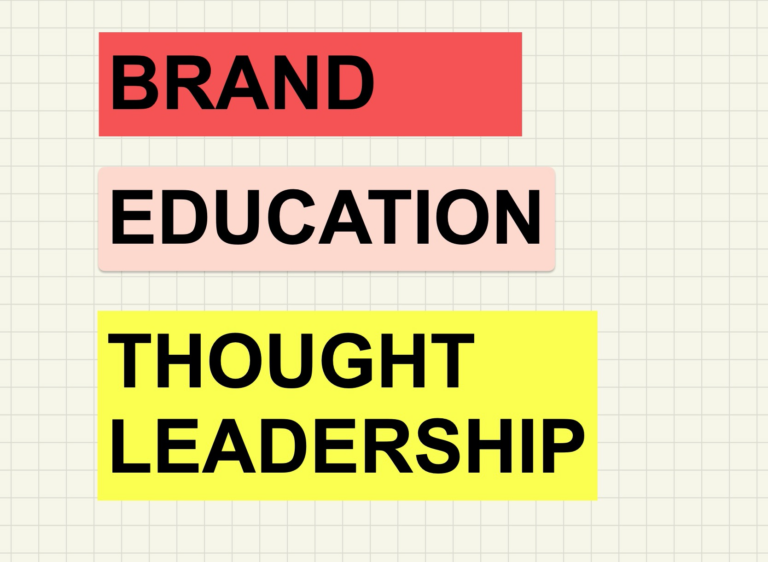What to do with “What is…” blog content & SEO
My newsletter subscribers got this first! Sign up here for free.
Recently, my Twitter pal John Henry from Growth Plays pulled out a gem of a tweet thread.
If you don’t know John Henry, he spends more time in large enterprise accounts than a raccoon in dirty dumpsters (that’s a compliment).
His tweets were about “What is” content and their creation. I have a few opinions on this (as I’ve expressed to my content agency) so I thought I would dive in.
Here’s the link to the tweets.
TWEET 1:
Huh, one of my early jobs in content marketing was outsourcing parts of the content to what’s known as a “content spinner.” This is when you input a section of content and then it spits out variations, usually on a word-by-word basis. It has a comically high number of errors.
Phrases like “project management” will come back as “work manipulation” or something like that.
I was forced to use it a few times… and then I slowly didn’t use it. As a writer with an English degree, my high-falutin sensibilities were offended.
I don’t feel like I was alone in using a few of these things, even sparingly. Bad content has always been used, that’s why the Helpful Content® Update is here. That machines are doing it better than they did before is nothing new. So the “first teams” have already exported that crappy content.
“Heavy lifting”–that’s the rub. I have used a few of the AI content tools, and they’re good in small doses.
They’ll give you an idea, you can rework it, reimagine it. It’s good for ad copy, a headline, maybe even a paragraph. Is that “heavy lifting?” Probably not in the context of good, SEO content.
TWEET 2:
I conveniently ignored “what is…” content in the analysis above. In my context, the “what is…” content has always seemed pretty basic. Maybe because I already know the “what” of the “what is…” content.
If I’m writing about a running great planning meetings, I’m not including info about “what is a meeting?” or “what is planning?” at the beginning of the article, even if the SERP has it.
I’ve moved that question to the end the post or into the FAQ (that’s what I asked the content agency to do).
Why? If my audience is looking to run a better sprint planning meeting, they already know what one is. They want to know how to do it better. Even if the SERPs are telling me to include the “what is…” I won’t lead with it.
I do recognize the all-powerful algorithm, so I’ll include it in there. But (hopefully) in a more reader-friendly way.
My belief is a hypothesis. I’ll admit: I have experimented with AI content for a similar topic and it spit out something halfway decent.
I reviewed it, edited it, and included it as part of the FAQ section. Max number of words? Maybe 75.
Did I use my noodle in that scenario? Half of my noodle maybe. I was looking for a quick hack, I found something that worked, I reviewed it, edited it, and I moved on.
Was that heavy lifting? I’ll say no. Or I’d like to believe it’s a no. The whole article was by no means an AI-generated copy and paste.
Was there any emotion? No. Not really. Did I mention the product earlier and what it could do? Of course.
The real question though is did I get them to align to my worldview? Am I underselling the “What is…”? Am I missing out on an opportunity?
TWEET 3:
Now, I’m feeling convicted. The “what is…” content in mind is the least important, reserved for college kids or those trying to pass some type of exam.
And this is where the IT DEPENDS looms large.
Because I’ve picked up from Mr. Scherck that he’s running with some big dogs with some complex topics.
And even if the practitioners may know what an XYZ is, does the buyer, does the manager, does the CEO? If the article can explain it to the buyer than that’s important.
I’m also not being fair to the very smart IC or team member who is just trying to figure out something new. In the past few months, a lot of intelligent, but normal people have probably googled “What is WEB3?” and received a mix of quality. That’s a legit search. Their buying intent? I’m not so sure
Where “What is…” matters more
- If you’re in a technical field where a lot of things are developing
- You are a high-level manager, and a subordinate comes to you with a problem you’ve heard of, but don’t know a lot about
- You are trying to understand new and emerging topics
- You are trying to sound smart at the bar
The last question then to John Henry’s point, is how do you value those eyeballs?
As people that will actually buy or just as brand building?
Does “what is…” lead to the $$$???
I generally think of them as top funnel, so with not as much money, but perhaps I’m underselling it.
Or for my industry and ICP, devaluing it is the appropriate approach.
Or maybe I just need to try harder, make it more interesting, and write a much better post.
WHAT’S GOOD (LINKS)
- Deconstructing the Helpful Content Update @ Marketmuse. The most helpful analysis I’ve read about the helpful content update
- Search intent frameworks with Lidia Infante from Sanity @ Optimist. She breaks down the different types of search intent (there’s more than you think). And I highly recommend the Optimist Slack community.
- How to plan a content “season” like a TV show @ Content Marketing Institute. Good thoughts in here, even though I struggle with brand stories when conversions are top of mind. Another topic for another time.
- The Demand Curve Growth Summit. They covered everything from not only SEO and content, but positioning, newsletters, building community, and agency management. Really interesting stuff. I checked in on a few and will revisit more. Recordings are live now and linked above.



